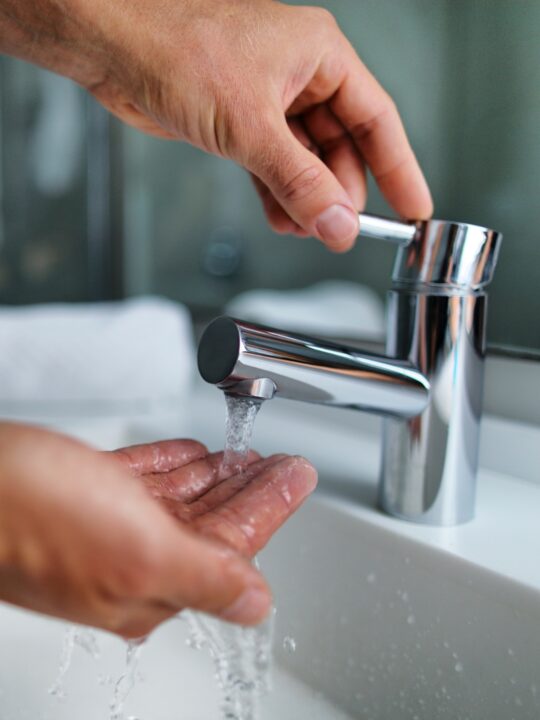Water demand is rising. How do you shift public perceptions before it’s too late?

Shortages are the future. Whether it be food, oil, power, or even labour, society seems to be aware of rising demand across the board. There are more people, and less stuff.
However, one shortage that the first world doesn’t expect to be affected by any time soon is that of water. Water is water. It’s a free, natural human right that comes out of my tap when I want it. Right?
The simple fact of the matter is that housing demand is rising at an alarming rate. The ONS predicts that the number of households in England is projected to increase by 1.6 million (7%) over the next decade, from 23.2 million recorded in 2018 to 24.8 million in 2028 – quicker than the rate that water infrastructure expansion can keep up with. Whilst this affects some areas of the country more than others, a variety of factors – longer life expectancy, immigration, higher divorce rates, multiple property ownerships – mean that in the coming years, the need for more and more water infrastructure is going to increase dramatically. And someone has to foot the bill.
So, how are water companies going to tackle the pressure to expand their infrastructure? If the amount of housing and resultant infrastructure is set to dramatically increase in the coming decades, then will people accept a proportionate increase in water bills? The obvious answer is to simply charge more, but this is likely to meet significant public and regulator resistance. The problem is: water is naturally going to be seen as a given. If recent British weather has shown us anything: it’s that water seems to be everywhere, and from this perspective, it’s hard to view water as being in short supply. Regardless of the investment and resources required to provide it en masse to the population, public opinion will always sway towards refusing to see the monetary value of clean, purified water. The water industry faces a significant challenge: how do you shift public perceptions of water itself and in particular, expected and unlimited supply?
Well, when it comes to averting a crisis in the future, there are options. The first of which is changing consumption to maximise efficiency, reduce waste, and save money. The term ‘grey water’ has seen a steady rise in popularity in recent years, referring to the water from baths, sinks, and showers that has been used, but not overly contaminated. Grey water recycling is currently in use across 29 countries globally, including US, Australia and Japan, and it sees water being treated and reused again, rather than 100% of all household water being ‘first hand’. This reduces the strain on demand and infrastructure – but it’s not that simple.
‘Recycled water’ as a concept isn’t going to be an easy sell. The idea of any water that isn’t glistening, pure and from the natural cycle could set off alarm bells with the public. So, how are water companies expected to garner support in finding a future compromise? A lot of this comes down to language. The current favourite – ‘recycled water’ – seems to be the most acceptable term , amongst ‘retreated’, ‘grey’ and ‘reused’. The UK isn’t completely oblivious to all of this either, especially the water stressed areas of Southern and Eastern England. For example, the Hampshire Recycled Water Project has begun, proposing new infrastructure in the area to prevent future shortages and droughts by recycling waste water.
People may initially recoil at the idea of recycled water. So, how do you move public opinion from a place of refusal to a place of acceptance? Well, there are several ways to consider. As with a lot of things, money can make a difference, and if you tell customers that option B is half the price, then option A starts to look a bit less appealing. Tiered water pricing systems could be the future, allowing households to select a payment structure that reflects what they are willing to use. Also, currently in place in some parts of the world, grey water can and most likely will be used to flush toilets, and in other household contexts that don’t necessarily need fresh drinking water every single time through redirection to specialised recycling facilities. Whilst the UK struggles to split grey and black water (sewage), it may be the case that future infrastructure will need to incorporate this distinction as it is built. All of this will contribute to easing the strain on water companies and infrastructure in the coming years.
If water companies are slow in moving customers to new solutions, it will be difficult to do so overnight in the future when we really start to see the population squeeze taking effect on limited water supplies. Only the companies that start to think smart now, and engage with these issues to understand how customers are thinking, will be in a good place to implement the necessary developments down the line. To be able to navigate the inevitable tipping point effectively and successfully, companies will need to start to test the waters.
Understand the perceptions and biases at play in the minds of customers, and get in touch today.

 Back to articles
Back to articles

